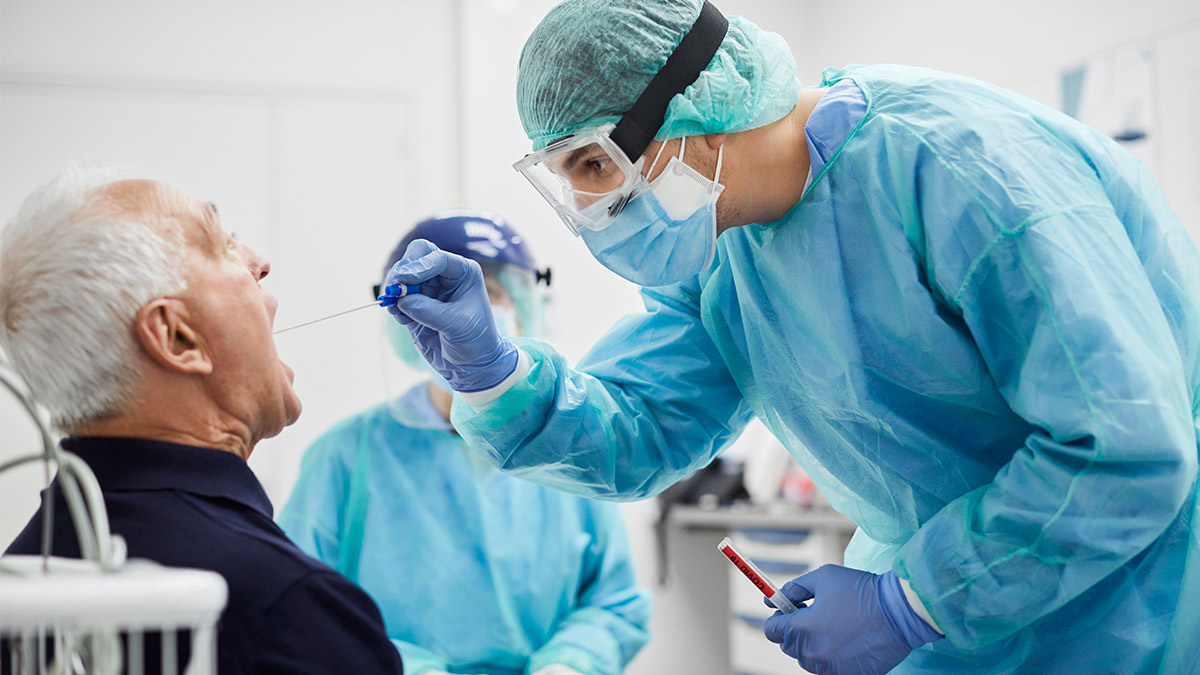This new AI Covid test could pump out a diagnosis quicker than a PCR

Pic: Getty
Researchers at the University of the West of Scotland (UWS) have created a unique artificial intelligence technology that can accurately diagnose Covid-19 in just a few minutes.
It’s quicker than a PCR test which UWS says can take up to two hours to process – lol, in Scotland anyway.
The technique uses x-ray technology, comparing scans to a database of around 3000 images, belonging to patients with Covid-19, healthy individuals and people with viral pneumonia.
It then uses an AI process known as deep convolutional neural network, an algorithm typically used to analyse visual imagery, to make a diagnosis.
And during an extensive testing phase, it proved to be more than 98% accurate.
A new tool in the diagnostic arsenal
The idea is for the tech to eventually be used to help relieve strain on hard-pressed Accident and Emergency departments, particularly in countries where PCR tests are not readily available.
“There has long been a need for a quick and reliable tool that can detect Covid-19, and this has become even more true with the upswing of the Omicron variant,” UWS director of the Affective and Human Computing for SMART Environments Research Centre Professor Naeem Ramzan said.
“Several countries are unable to carry out large numbers of Covid tests because of limited diagnosis tools, but this technique utilises easily accessible technology to quickly detect the virus.”
Meanwhile we’re twiddling our thumbs waiting for the TGA to give Anteotech (ASX:ADO) the go-ahead to kick off rapid diagnostics test manufacturing in Queensland…
AnteoTech is waiting on TGA approval to hit the green light on producing rapid antigen tests for Queenslanders.
We’re supporting AnteoTech to build a manufacturing facility in Queensland. They estimate they’ll be able to supply roughly 1 million rapid antigen tests every month. pic.twitter.com/odYFERhnr5
— Annastacia Palaszczuk (@AnnastaciaMP) January 20, 2022
Not a replacement for PCR tests
But before you get too excited, the professor flagged that Covid-19 symptoms are not visible in x-rays during the early stages of infection, so the tech can’t fully replace PCR tests.
“However, it can still play an important role in curtailing the virus’s spread especially when PCR tests are not readily available,” he said.
“It could prove to be crucial, and potentially life-saving, when diagnosing severe cases of the virus, helping determine what treatment may be required.”
The team now plans to expand the study, incorporating a greater database of x-ray images acquired by different models of x-ray machines, to evaluate the suitability of the approach in a clinical setting.
UNLOCK INSIGHTS
Discover the untold stories of emerging ASX stocks.
Daily news and expert analysis, it's free to subscribe.
By proceeding, you confirm you understand that we handle personal information in accordance with our Privacy Policy.








